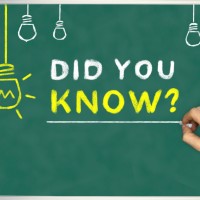by Richard Averett, RGS Executive Director
Sometimes parallels hit us with a thunderbolt of insight; often we are convinced our unique circumstances leave us alone to learn new lessons. My hope is that you will be Thor-like and grasp some bolts from Germany’s Energiewende (energy transformation). Energiewende was conceived in the 1980s and became policy in 2000. Fukushima accelerated deployment. The goal is to reduce greenhouse gas emissions 40% below 1990 levels by 2020 and 80% by 2050 – without nuclear power.
Because of Energiewende, Germany now gets more electricity from renewable sources than any other major industrialized country. At the same time, they are creating a world-dominating renewable energy industry, contributing approximately 400,000 jobs and billions in economic activity.
Why has Germany been successful at developing this thriving industry and what can we – the local governments of California – learn from them? Seven lessons emerge:
1. Think Big, No Think Huge
In Germany, wind turbines dot the horizon in every direction and are clearly visible from every major road in the northeast part of the country. Along the north shore are massive 7.5 MW turbines, enormous structures almost 200 meters high (650 feet), with a rotor diameter of 127 meters (416 feet). The blades capture more wind energy than any other onshore wind turbine on the market. These behemoth onshore structures serve as constant reminders to the people of the region that they are committed to a renewable energy future and their environment is cleaner because of it.
2. Take Advantage of Knowledge Transfer
When industry was commissioned to develop a floating wind turbine, it turned to the oil and gas offshore drilling industry for inspiration. The first prototype developed weighed 1,500 tons, the second came in at 1,200 tons and the third is down to 670 tons – less than half its first iteration. To build a prototype, the engineering firm Gicon employs 300 engineers and has taken over a portion of a shipyard, a fabrication facility that at its peak had employed more than 1200 welders before it went bankrupt in 2009. Today, welders are literally breathing new life into the shipyard as they put together the prototype. Gicon estimates that it could build one floating offshore wind platform per week and employ up to 1000 steelworkers doing it. Once the prototype is in place and the concept is proven, the company hopes it will partner with a major turbine supplier and deploy a cheaper and easier to install floating turbine in Japan, the U.S. and all over Europe.
3. Make Peace With Industry Allies
The German city of Husum has historically hosted one of the largest wind power events for the global wind industry, until the industry itself grew too large. When another city, Hamburg, first announced its plan to hold an annual event that would attract exhibitors from all over the world, the original host city was miffed, to put it mildly. But after many negotiations, the organizers hashed out a plan that would allow Hamburg to host a bi-annual international event and Husum to host a bi-annual event that would be focused just on the German onshore and offshore wind market.
4. Keep Your Eyes on the Horizon
Keeping your eyes focused on the horizon is supposed to ward off seasickness. For the wind industry, however, keeping your eyes on the horizon means planning for the future, developing solutions TODAY that will serve the energy needs of tomorrow. In Germany’s case, their electric grid is so stable that it doesn’t need storage capacity – for a while. But companies are already developing storage options that will be competitive around the world.
5. Go Over the Top
When Hamburg Wasser, the wastewater treatment plant for the city of Hamburg, wanted to be more sustainable, it didn’t settle for simply harnessing the biogas produced at its facility. Instead, the public utility with more than 2,400 employees decided to embark on a much more difficult task by installing a 3-MW turbine at its Köhlbrandhöft site, which is only accessible by barge.
The massive turbine has a total height of roughly 200 meters and the rotor blades alone weigh 11 tons. The total investment for the project was €6.2 million but is expected to save the facility €900,000 per year for the next 20 years. Today Hamburg Wasser generates 120 percent of the energy it needs, making it an energy positive organization.
6. Take the Road Less Traveled
Feldheim is a tiny city with just 125 inhabitants which sits on the outskirts of Berlin in the eastern part of Germany. When Germany was divided, coal was the only heating fuel available to the people of Feldheim and once the wall came down in 1989, they decided to make a change. Rather than spend their money on individual boiler systems, the townspeople came together and formed their own company which could purchase the output of a wind farm nearby and use that power for their homes.
Further when EON, the public utility that serves the people of Feldheim, told them that they couldn’t use the national grid and purchase their own power, they were not deterred. Instead, they built their own micro-grid around the village so now two grids are in place in their town.
And they didn’t stop there. In 2008, the one large agricultural business in town was slowing down because it couldn’t remain competitive. A decision was made to invest in a biogas system to heat the barn that housed about 5000 pigs and to replace the potato and sugar beets with maize and rye to be used as feedstock for the system. And once again they didn’t stop there, deciding to expand the biogas system into a district heating system for the entire town. Boilers were replaced with pipes and two 45,000-gallon tanks hold water that remains at a constant 90 degrees C and heats the entire town.
Today Feldheim is 100 percent powered by renewable energy – 90 percent from wind and 10 percent from biogas. The most remarkable part of Feldheim’s accomplishments is that in taking on this project the city not only secured jobs in the small town, it also lowered the electricity rates for the people. They now pay just €0.17 per kWh of electricity compared to the rest of the country where rates are €0.27 per kWh.
7. Consider Unintended Consequences
One part of the German Energiewende that shouldn’t be ignored is the fact that many support industries are coming back to life through renewable energy. In addition to the shipyard in Straslund that is now employing welders who had been laid off years ago, the Port of Sassnitz is burgeoning with new construction in order to meet the demand for new offshore wind terminals.
Slightly restated for our purposes, the seven lessons resonate for local governments:
1. Think Big, No Think Huge – Fix a SYSTEM, not just a problem
2. Take Advantage of Knowledge Transfer – Learn from Everyone, other agencies, companies, countries
3. Make Peace With Industry Allies – Share, Collaborate, Grow Stronger with Others
4. Keep Your Eyes on the Horizon – Think Generations out
5. Go Over the Top – Don’t Let Others define the Limits
6. Take the Road Less Traveled – Envision the Perfect and Go For It
7. Consider Unintended Consequences – Karma is Real
With permission of Renewable Energy World editor Jennifer Runyon.



Comments are closed.